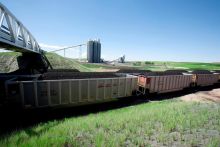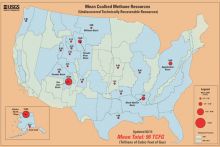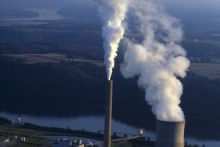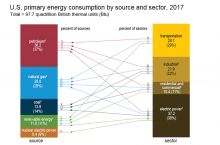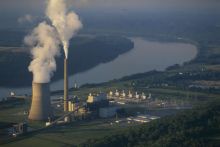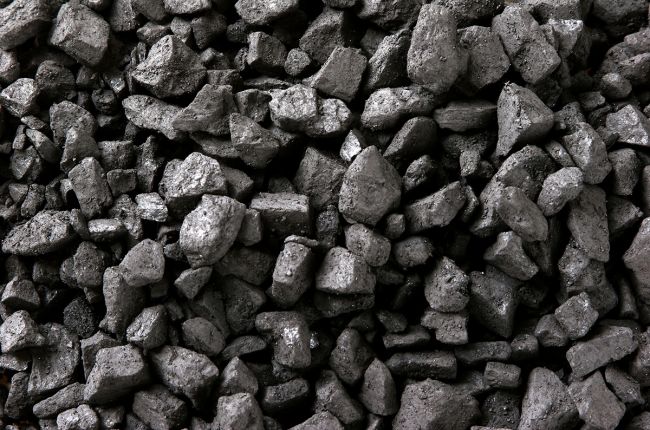
The coal formation process involves the burial of peat, which is made of partly decayed plant materials, deep underground. The heat and pressure of burial alters the texture and increases the carbon content of the peat, which transforms it into coal, a type of sedimentary rock. This process takes millions of years.
Types, or “ranks,” of coal are determined by carbon content. There are four types of coal, ordered from highest to lowest rank below.
Anthracite, or “hard coal,” contains the highest amount of carbon out of all coal ranks (86%-97%)1. It has a brittle texture and lustrous sheen. It is used mostly in industrial settings and the metals industry due to its high heat value. Anthracite is rare in the United States, only making up 0.2% of coal production in 20172. The largest anthracite deposit in the country is located in northeast Pennsylvania, and Pennsylvania is the only state in the US currently producing anthracite coal2.
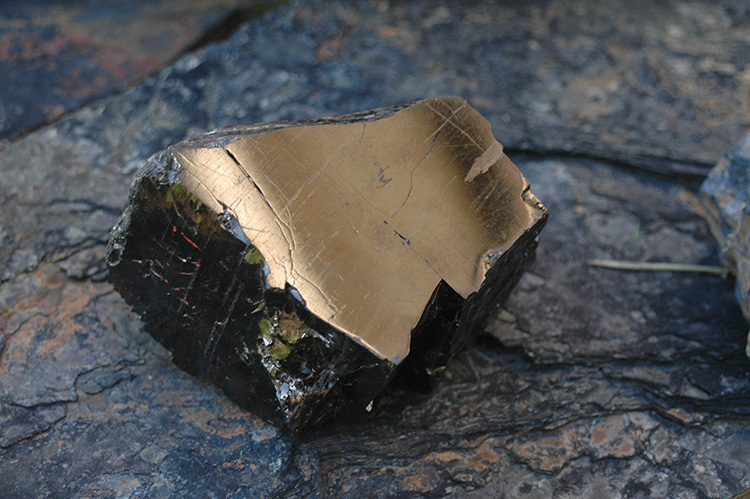
Bituminous coal, often called “soft coal,” has slightly lower carbon content than anthracite (45%-86%)1. The wide range of carbon content in bituminous coal warrants use for both electricity and steel production. It can be identified through its shiny luster and layered texture. The largest bituminous coal producers in the U.S are West Virginia, Illinois, Pennsylvania, and Kentucky2. Bituminous coal made up 46% of US coal production in 20172.
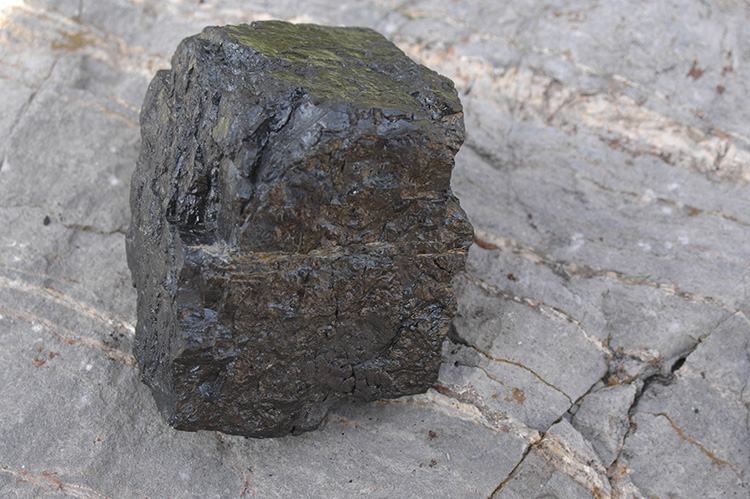
Subbituminous coal does not have the same shiny luster as higher ranked coals. As the name suggests, it has lower carbon content than bituminous coal (35%-45%) and is primarily used for electricity generation1. The vast majority of subbituminous coal production in the United States comes from Wyoming2. Subbituminous coal made up 45% of US coal production in 20172.
Lignite is often called “brown coal” because it is lighter in color than the higher ranks of coal. It has the lowest carbon content out of all the coal ranks (25%-35%)1 and it has a high moisture content and crumbly texture. It is mainly used in electricity generation. Texas and North Dakota together account for 93% of U.S. lignite production2. Lignite made up 9% of US coal production in 20172.
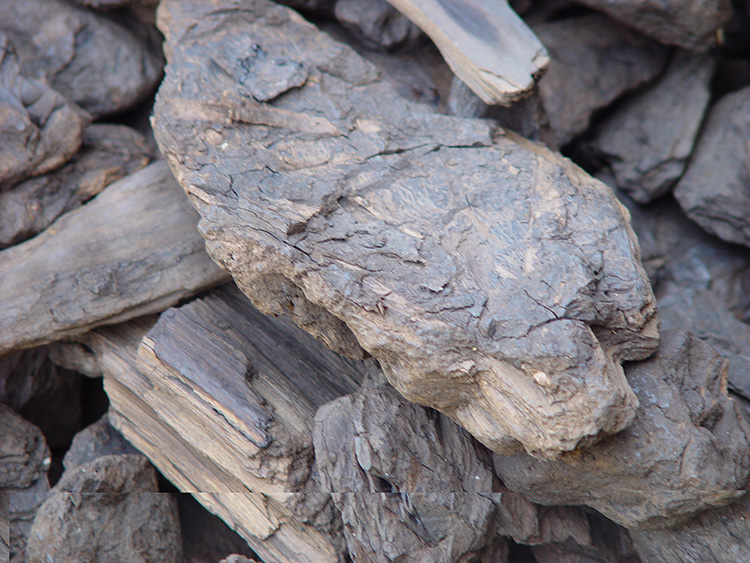
Learn More
- Coal resources in the United States (Map) United States Geological Survey
Interactive map showing the distribution of different types of coal in the United States
- State Profiles and Energy Estimates (Webpage) US Energy Information Administration
Collection of webpages for the energy production and consumption of each U.S. state and territory
- State Energy Flow Charts (Visualization) Lawrence Livermore National Laboratory
Database of charts that shows the distribution of energy resources in each state from 2010 to 2017
- Quarterly Coal Report (Webpage), Energy Information Administration
Detailed quarterly data on U.S. coal production, trade, price, consumption, quality, and more
- Coal (Pamphlet), Ohio Geological Survey
Basic overview of the geology and formation of coal, different grades of coal, coal mining in Ohio, and clean coal technology
References
1Subbituminous and bituminous coal dominate U.S. coal production US Energy Information Administration
2Annual Coal Report 2017 (Report) U.S. Energy Information Administration


